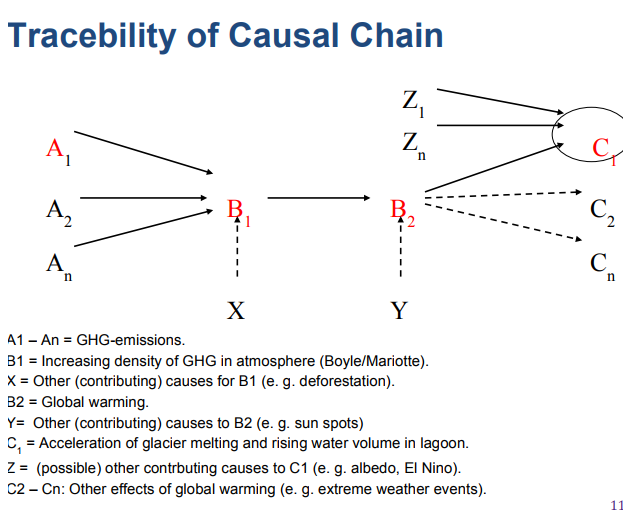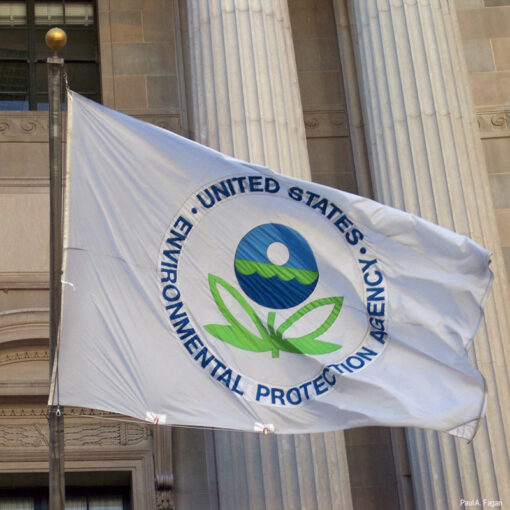By Daniel J. Metzger and Romany M. Webb

Last week Vice President Pence expressed how “very proud” he is of the administration’s environmental record and declared that, if re-elected, President Trump will “take care of our environment and follow the science.” That would be a marked departure from the President’s first term. As documented in the Silencing Science Tracker, for nearly four years, President Trump and his administration have consistently censored, misrepresented, and stifled scientific research and discussion. Many of the administration’s actions have targeted climate scientists, who have been removed from their positions, prevented from publishing their research, or had their findings misrepresented or simply ignored by officials. Instead of relying on science, the administration has turned to industry for advice, and put their priorities first.
Many have assumed that if President Trump is re-elected he and his administration will continue with their pro-industry agenda. But what specific actions might that entail? The Trump campaign has not issued any position papers outlining its climate priorities. The President and several administration officials have, however, recently expressed views on climate change and on whether and how it should be addressed. Based on their statements and actions taken during President Trump’s first term, we have identified eight energy and environmental policy objectives we believe are likely to be pursued if Trump is re-elected:
1. Continued Support for Fossil Fuel Production: Increasing domestic production of fossil fuels, particularly oil and natural gas, has been a key goal of the Trump administration over the last four years. The administration has framed increasing oil and natural gas production as important for both economic and national security reasons, with the Department of Energy (DOE) last year branding the fuels “molecules of U.S. freedom,” and more recently describing them as “providing energy security and supporting our quality of life.” DOE and other federal agencies have often called natural gas a “clean” fossil fuel, when in fact it is a major source of greenhouse gas emissions.
The Environmental Protection Agency (EPA) and Department of the Interior (DOI) recently finalized rules that weaken controls on methane emissions from oil and natural gas production. While those rules were swiftly challenged in court, if President Trump is reelected, they will no doubt be vigorously defended by the Department of Justice. Even if the rules are struck down, we can expect EPA and DOI to “return to the drawing board,” and develop new rules to the same effect.
Federal agencies are also likely to explore additional regulatory changes to support oil and natural gas production. Energy Secretary Dan Brouillette recently told a meeting of top oil and gas company executives that the administration is exploring “every tool” available. Ideas previously floated by the administration include opening new areas of federal land and/or the outer continental shelf for oil and natural gas production, reducing the royalties payable in respect of production in such areas (e.g., by changing the rules governing how production is valued), and waiving compliance with regulations governing the design and operation of production sites in such areas. The administration is also looking at ways to increase demand for domestically-produced oil and natural gas. In March this year, EPA and the Department of Transportation finalized its so-called Safer Affordable Fuel-Efficient Vehicles (SAFE) Rule, which relaxes fuel economy and tailpipe carbon dioxide emissions standards for light-duty vehicles. More recently, DOE has begun purchasing large amounts of domestic oil, reportedly to help shore-up prices amid declining demand due to the COVID-19 pandemic, and is looking at regulatory changes that would facilitate the export of domestic natural gas.
2. Support for Coal-Fired Electricity Generation: Secretary Brouillette recently described the Trump administration’s policy with respect to electricity generation as “regulating less” to enable industry to “innovate more.” Nevertheless, over the last four years, the administration has sought to promote conventional forms of generation (e.g., fossil fuels and nuclear) over more innovative technologies (e.g., renewables and storage). The administration has gone to particularly great lengths to prop-up coal-fired generation, which has declined markedly in recent years. While research shows that the decline was primarily due to economic factors (principally reductions in the cost of natural gas and renewable generation), President Trump has blamed environmental regulations, such as the Clean Power Plan adopted under President Obama. In 2019, Trump’s EPA rescinded the Clean Power Plan and replaced it with a much weaker Affordable Clean Energy (ACE) Rule, which is now the subject of litigation. Again, if President Trump is reelected, the Department of Justice will no doubt vigorously defend the ACE rule. The administration may also take other steps to support coal-fired generation, for example, through changes to the rules governing wholesale electricity markets. DOE and the Federal Energy Regulatory Commission have already taken some steps in this regard and might look to do more in a second Trump term.
3. Support for Nuclear Generation: It is also likely that the Trump administration will take steps to support nuclear generation. Secretary Brouillette recently made several public statements in support of nuclear generation and criticized proposals to restrict its use. On at least one occasion, Secretary Brouillette argued that nuclear generation should be preferred over renewable generation because, in his view, “[r]enewables by themselves cannot ensure the reliable flow of electricity.”
4. Continued Hostility Toward Renewable Generation: Throughout his first term President Trump has repeatedly made statements questioning the efficacy of renewable generation and touting the superiority of fossil fuels. The President’s wide-ranging statements include, for example ones arguing that windmills “are not working all that well”; that the noise they create causes cancer; and tweeting that “the monstrosities are ruining landscapes.” EPA Administrator Andrew Wheeler has also been critical of renewable generation, recently erroneously blaming the August blackouts in California on policies that seek to “push more renewables onto the grid.” And DOE Secretary Brouillette recently reaffirmed that “the United States is abandoning none of our fuels, and not one iota of economic opportunity, in the quest for a clean energy world.” It seems likely, then, that renewable generators would receive little support during a second Trump term.
5. Supplanting Carbon Capture and Storage for Emissions Reductions: Secretary Brouillette has endorsed taking steps to get carbon capture technologies “off the shelf” and into the market. To that end, on September 1, 2020 DOE announced $72 million in funding for research into carbon capture technologies, of which $21 million was earmarked for direct air capture. That is an important step because many researchers agree that, to avoid climate catastrophe, we must both reduce future greenhouse gas emissions and remove previously emitted gases from the atmosphere. However, the Trump administration has indicated that it views carbon capture as a substitute for, not a complement to, eliminating the use of fossil fuels. Assistant Secretary for Fossil Energy Steven Winberg confirmed that these grants support the “primary purpose” of DOE’s Office of Fossil Energy: “to ensure that the United States can continue to rely on its fossil fuel resources.”
6. Opposition to Energy Efficiency Measures: Loosening and removing energy efficiency standards has been a regular subject of President Trump’s attention throughout his first term. Last year, for example, the President took aim at lightbulb efficiency standards by arguing that, apparently relative to incandescent lamps, a newer lightbulb is “many times more expensive . . . [and] it gives you an orange look.” At his confirmation hearing, Secretary Brouillette promised that DOE will “stop the insanity” and “allow consumers to buy the lightbulbs they would like to buy rather than the ones Washington would like you to buy.”
DOE has already finalized a determination limiting the lightbulbs subject to energy efficiency standards and lessening the stringency of those standards. It has similarly undone energy efficiency standards that relate to other types of lighting and proposed changing the standards for appliances, such as dishwashers, heaters, furnaces, and boilers. Assuming the administration continues the same trajectory, we can expect to see these proposals finalized and may see additional, comparable energy efficiency standard rollbacks. Moreover, we should not expect to see energy efficiency standards for the many types of appliances that do not currently have such standards.
7. Restraining Environment-Focused States: Statements and actions by President Trump and administration officials suggest they may take steps to reign in states that want to go further than the federal government to address climate change. Last year, for example, EPA promulgated the first part of the “SAFE Rule,” which withdrew California’s Clean Air Act preemption waiver, limiting California’s authority to set standards more stringent than the federal standards.
Going forward, the administration may seek to restrict states’ environmental actions in other ways. In a recent address at the Nixon Presidential Library EPA Administrator Wheeler expressed frustration with state actions that prioritize environmental goals at the perceived expense of economics. “It’s very disappointing to see governors on the East Coast, such as Governor Cuomo, unilaterally block pipelines” Wheeler noted, adding that there are “many examples of poor environmental outcomes here in California, despite its environmental reputation.” Wheeler added that in the wake of the administration’s changes to NEPA regulations “new permit bottlenecks will be at State-level agencies implementing federal program[s].” On their own, Administrator Wheeler’s comments say little about what specific steps the administration may take, but they suggest a continued desire to limit individual states’ discretion to lead on climate regulation.
8. Undermining Science-Based Regulation: Finally, and critically, we expect a re-elected President Trump and his administration to continue taking steps to reduce the role of science in agency decision making.
Restricting, ignoring, and reframing scientific research has been a hallmark of President Trump’s first term, and the pace and consistency of the administration’s actions suggest that a second term would bring more of the same. In Administrator Wheeler’s address at the Nixon Presidential Library he described two pathways the administration is looking to use to further subordinate science to economic priorities. He noted that the agency is working on a series of new cost benefit-regulations that will apply to every rule the agency proposes. The first, which would apply to rules adopted under the Clean Air Act, was proposed last year and could significantly limit consideration of co-benefits when developing standards under the Act. Administrator Wheeler committed to having similar regulations “for all our environmental statutes [finalized] by 2020.” Wheeler also noted the so-called “Science Transparency Rule,” which critics have argued will prevent the agency from considering epidemiological studies—long one important basis for air and water pollution standards—that rely on confidential patient data. In a next term, the Trump administration could use either of these pathways to justify climate policy that is out of step with scientific consensus.
As well as acting on above policy objectives, if re-elected, the Trump administration will likely use the next four years to advance other climate- and environment-related regulatory actions it has proposed but not yet finalized (e.g., its proposals to weaken controls on greenhouse gas emissions from landfills and reduce penalties for automobile manufacturers that fail to meet fuel economy standards). The Trump administration could also use the next four years to correct procedural and other errors that have resulted in its final regulatory actions being struck down by the courts. As our colleagues Michael Gerrard and Jessica Wentz wrote last year, the courts have invalidated various Trump administration actions for failure to comply with the requirements of the Administrative Procedure Act, National Environmental Policy Act, and other statutes. Another four years would give the Trump administration time to try again.
For a full list of actions taken by the Trump administration to weaken or eliminate federal climate protections, visit the Sabin Center’s Climate Deregulation Tracker. Our recent report—Climate Reregulation in a Biden Administration—outlines steps that a Biden administration could take to repair and rebuild the federal climate governance framework.
Romany Webb is a Research Scholar at Columbia Law School, Adjunct Associate Professor of Climate at Columbia Climate School, and Deputy Director of the Sabin Center for Climate Change Law.





